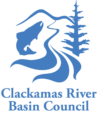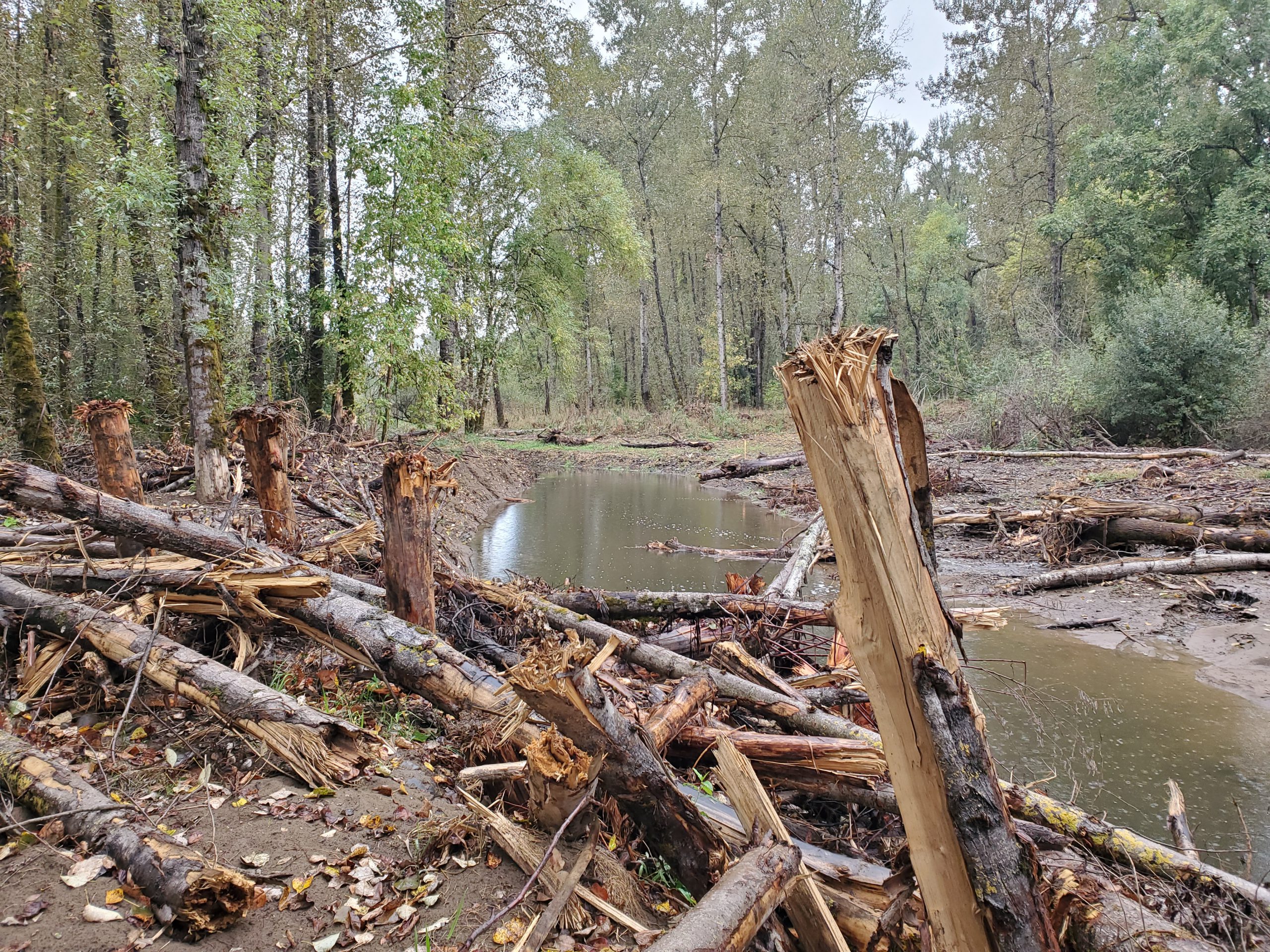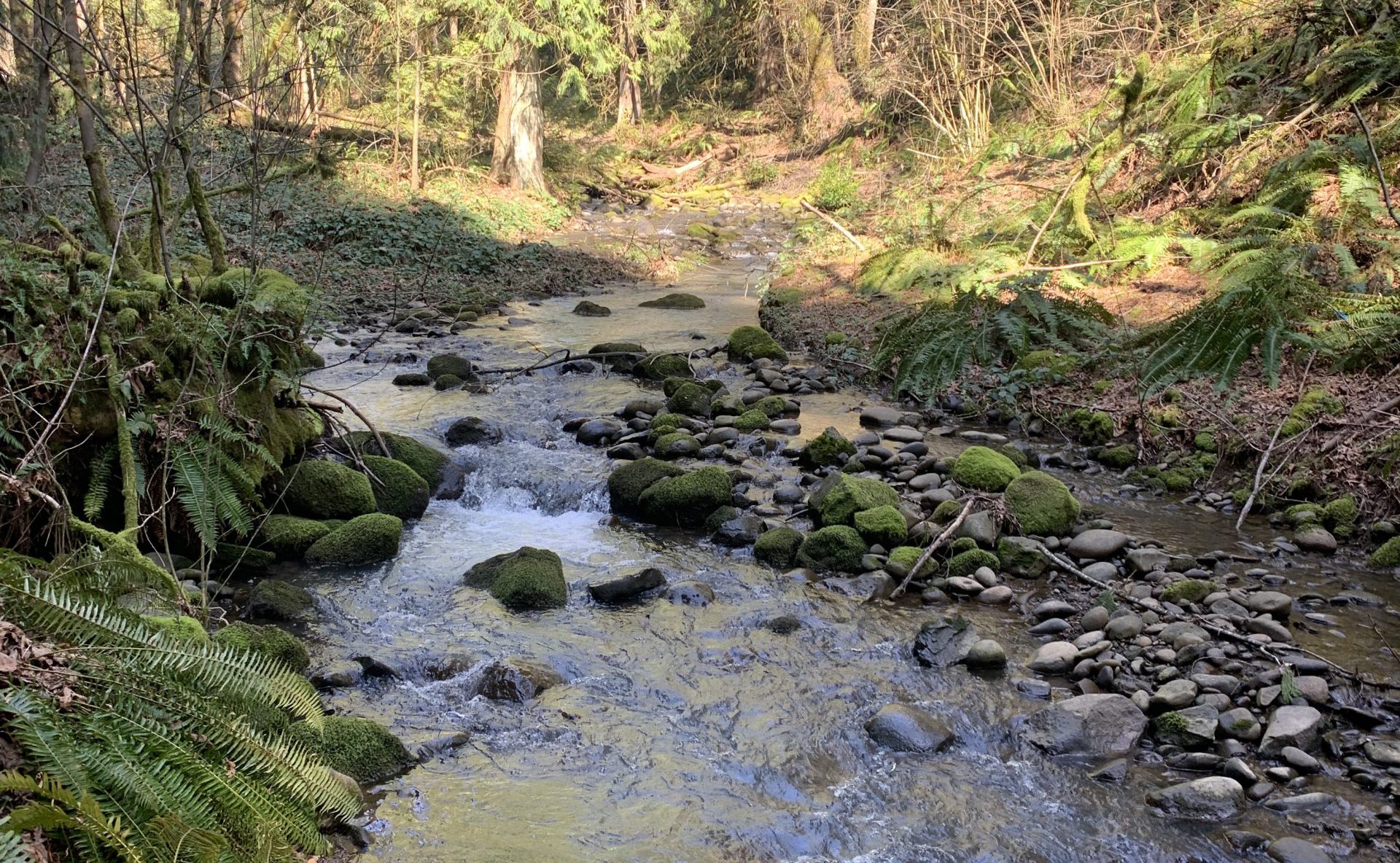Content in this project announcement provided by Kari McClellan, U.S. Forest Service
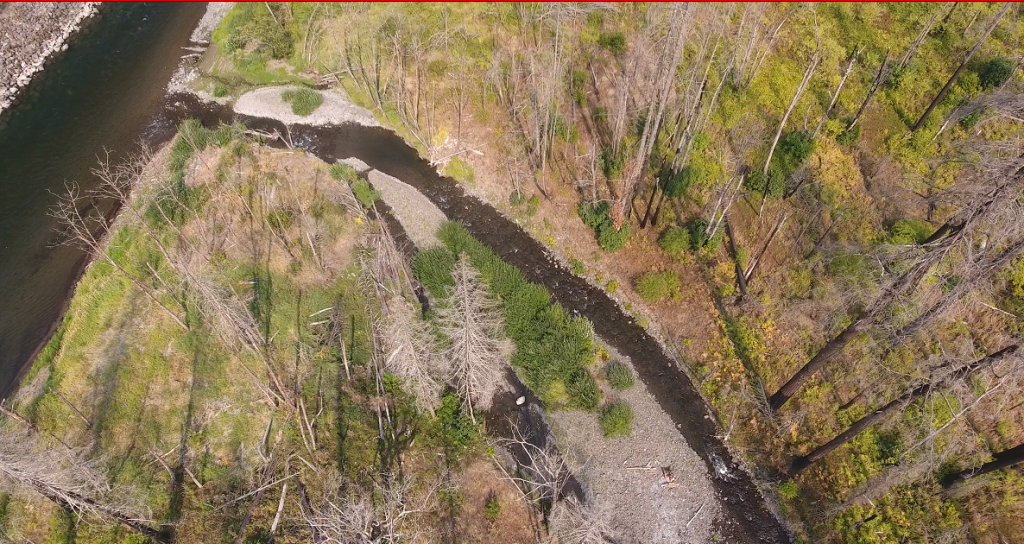
South Fork Clackamas River Habitat Restoration Project
The Clackamas River Basin Council and partners are working on the South Fork Clackamas River Habitat Restoration Project in the summer of 2023. This project involves tipping 50 fire-killed trees over an area of 0.2 miles and building a woody habitat structure at the mouth of the river. Woody habitat structures, or “jams,” create spawning and rearing habitat for salmonids by providing shade, hiding places from predators, and access to food. CRBC and contractors will use an excavator to tip trees and build the wood structure.
When is the project?
Between August 21-31, 2023. The group chose to implement this project in late August to minimize impacts to recreationists while complying with ODFW’s in-water work window that protects spawning salmonids. CRBC conducts in-water work during the summer months of July and August because fish counts are much lower during this time. Less fish in the river means less interference with fish migration, spawning and rearing.
Where is the project?
River mile 0.0 (mouth) to 0.2 of the South Fork Clackamas River, approximately two miles upstream of the North Fork Reservoir. This site is visible when traveling up Highway 224, just past Promontory Park when going East.
The image to the right shows the locations of tipped trees along the South Fork Clackamas River. You can see the location of the log jam at the Clackamas River – South Fork confluence.
Who implemented this project?
The Clackamas River Basin Council, USDA Forest Service, Oregon Fish and Wildlife, and Portland General Electric collaborated on this habitat restoration project. The partners worked with contractors to create the log structure and replant disturbed areas.
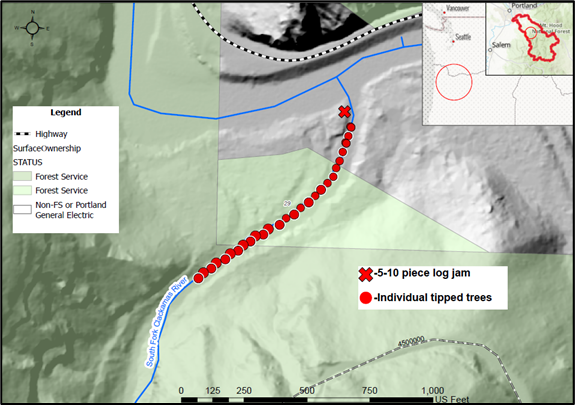
What fish species will potentially benefit from this project?
Spring Chinook salmon, Coho salmon, Winter Steelhead, Pacific lamprey, Bull Trout, and resident Cutthroat and Rainbow trout will benefit.
The Clackamas Basin is home to the last significant run of wild late winter Coho in the Columbia basin, and has one of the only two remaining runs of spring Chinook in the Willamette Basin. Lack of access to side channels and large wood is an identified limiting factor to salmon recovery.
>Why is this project being implemented in the South Fork?
The South Fork Clackamas is a Wild and Scenic River that supports several species of ESA-listed species. Adding large wood to the river will help minimize bank erosion and provide cover needed for fish during all life stages.
What is the Clackamas Focused Investment Partnership (FIP)?
The FIP is an Oregon Watershed Enhancement Board investment that provides funds to projects that support partnerships and have clear and measurable ecological outcomes.
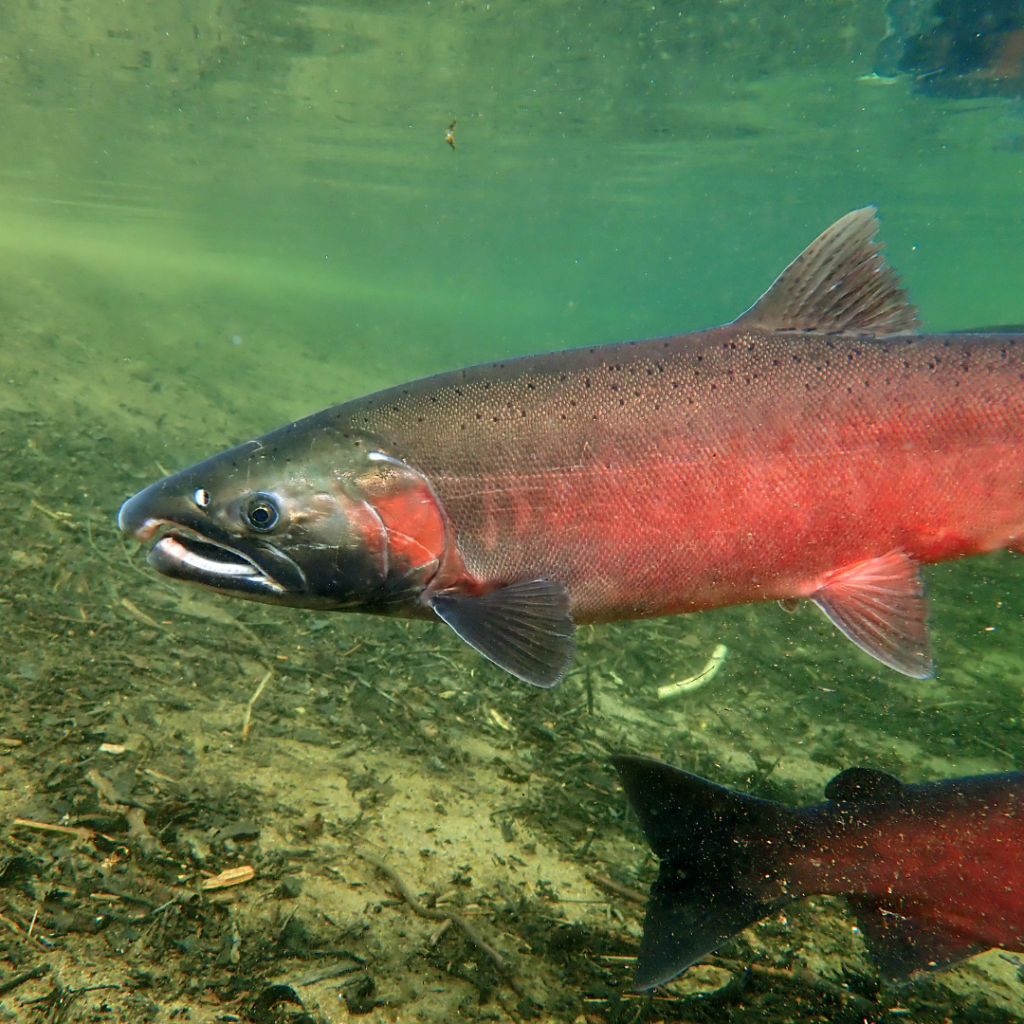
Please consider supporting the Clackamas River Basin Council’s work. You can help improve fish and wildlife habitat, water quality, and climate resiliency by making a gift today:
